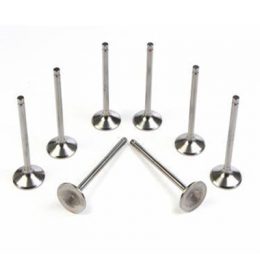
Ship Rudder
Ship Rudder
A rudder is a device used to guide and steer a ship. A rudder is a hydrofoil that rotates on a vertical axis. They are usually located in the stern of the ship behind the propeller and generate lateral forces and steering moments around the ship’s center of gravity by turning the water flow in the plane’s direction of the fins.
The rudder is used to guide the boat. Steering action largely depends on the area of the rudder. The required rudder area will vary by vessel type, as the required maneuvering capabilities vary widely and general vessel design may impose limitations.
The rudder area is usually the area relative to the immersed metal plane. The aspect ratio means the depth to the width of the rudder, and its value is usually 2. The high aspect ratio for large containers with unlimited depth. A higher aspect ratio significantly reduces reverse torque.
Ship Rudder Pictures

Calculation of force acting on the rudder
The force on the rudder depends on:
- Rudder Area
- Form of rudder
- Ship speed
- Rudder Angle
Force acting on the rudder, F = k A V²
where,
k = The constant depends on the shape of the rudder, the density of the water, the angle of the rudder. It ranges from 570 to 610.
A =Rudder Area in m²
V =Ship speed (m/s)
F works on point M, measured from the leading edge of the rudder (where the water stream first touches the rudder)
M = (0.195 + 0.305 sinθ ) L
where,
θ = Turning angle of the rudder
L = Width of the rudder
The rudder area is 1/60 to 1/70 of the midplane area of the wreck. Faster boats require less rudder area.
The rudder can be hinged on pivots and journals or can be turned about an axis that passes down through the rudder. The weight of the rudder can be carried by bearing pivots or bearings at the rudder head (rudder bearings) or a combination of both.
3 types of marine rudder

Balanced rudder (fully balanced rudder)
- There is no torque on the rudder stock at certain angles when 20% to 37% of the area is in front of the steering axis.
- At a certain angle of the rudder, it is balanced. That is, the torque is zero to keep the rudder at that angle.
- The axis of rotation is between 0.2 L and 0.37 L
Semi-balanced rudder
- A rudder, a fraction of its area, less than 20%, located in front of the steering axis
- They balance the rudder at any angle.
- Rotation shaft less than 0.2 L
Unbalanced rudder
- A rudder with all its areas behind the steering axis.
- The rudder is balanced at any angle.
- The axis of rotation is the leading edge.
Construction of Rudder parts
- Modern rudders have a streamlined form and are made of steel plates, the dimensions of which are reinforced by internal webs. With the rudder fully fabricated, prepare a side plate and weld the vertical and horizontal stiffening webs to this plate
- Another plate, usually called the closing plate, is then welded to the inner web only from the outside. This can be achieved by welding the flap strips to the web before assembling the closure plate and then slot welding the plate.
- The upper surface forms a generally horizontal flat palm that acts as a coupling point for the rudder stock.
- There is a lifting hole on the rudder, which can realize vertical and in-line lifting when the rudder is installed or removed. This lifting hole takes the form of a short tube, welded through the rudder, doubled on the sides and closing plates.
- Drain holes are provided at the bottom of the rudder for checking water ingress when inspecting the vessel in dry dock.
- The inner surfaces are suitably coated to prevent internal corrosion, and in some cases, the inert plastic foam maybe filled in the rudder.
- The rudder was tested at a head of 2.45 M above the top of the rudder.
- “The Ultimate Guide to Marine Gate Valves: Benefits, Selection, and Maintenance”
- Marine Engine fuel injection system
- Marine Propeller Shaft Maintenance: Key Considerations for Performance
- Construction Explanation: What is a Marine Engine Bedplate?
- 5 Ways to Extend the Life of Your Diesel Engine Crankshaft
- Marine Cylinder Liner Maintenance Tips



